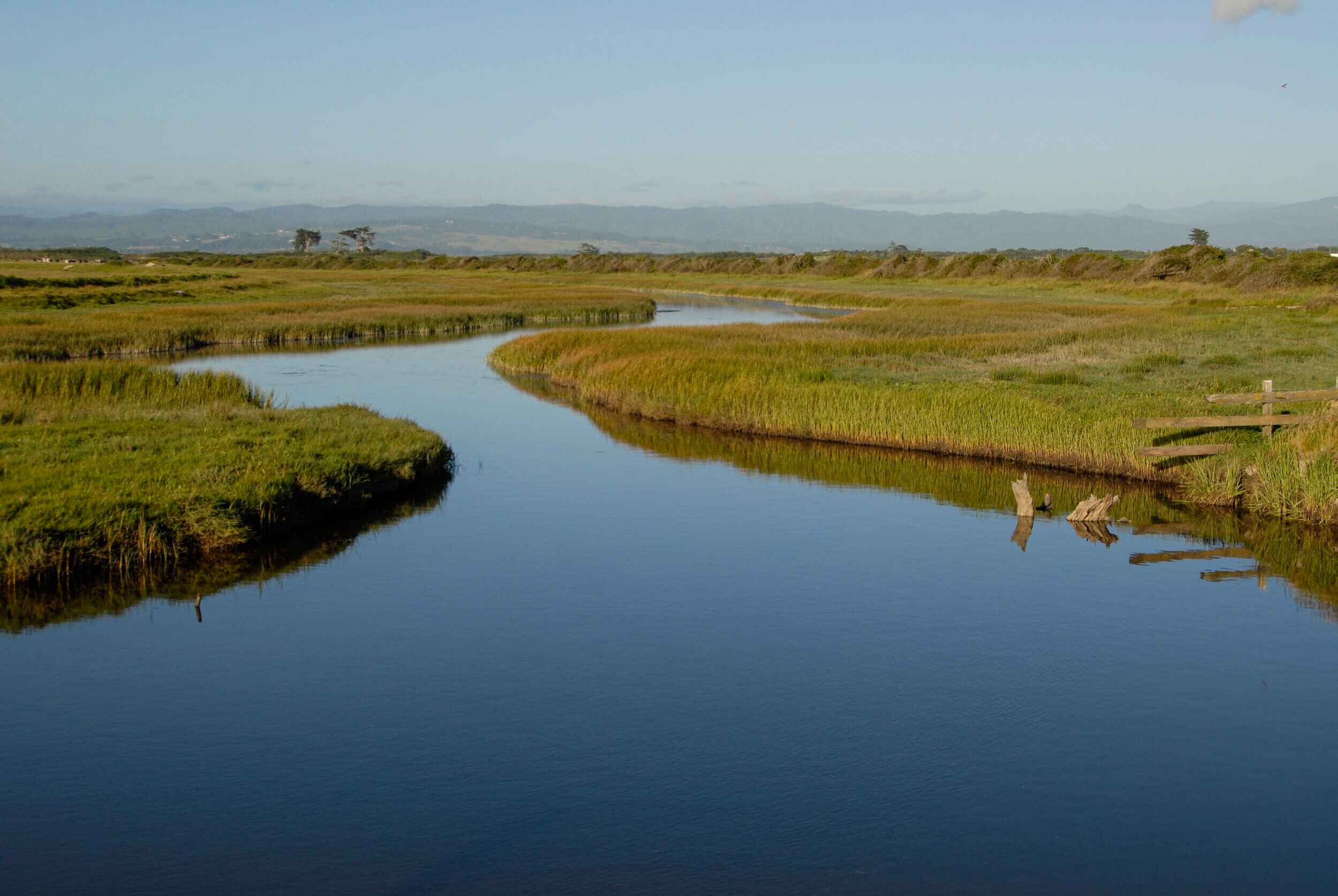
Estuaries are fascinating and dynamic ecosystems that serve as a critical link between rivers and the ocean. These unique environments are characterized by the mixing of freshwater and saltwater, creating a rich habitat that supports an abundance of plant and animal life. From their important role in nutrient cycling to their contribution to coastal protection, estuaries offer a wide range of benefits. In this article, we will delve into 13 extraordinary facts about estuaries that will give you a deeper appreciation for these remarkable natural wonders. So, get ready to embark on a journey of discovery as we explore the wonders of estuaries and the vital role they play in our world.
Key Takeaways:
- Estuaries are special places where rivers meet the sea, creating homes for many plants and animals. They help protect coastlines and provide food for birds and fish.
- Estuaries are like nature’s superheroes, filtering water, storing carbon, and supporting local economies. But they need our help to stay healthy and vibrant.
Estuaries are unique ecosystems
Estuaries are where rivers meet the sea, creating a fascinating blend of fresh and saltwater environments. These dynamic ecosystems are teeming with life, providing a vital habitat for a diverse range of plants and animals.
Estuaries are highly productive
Due to the mixture of nutrients and sediments brought in by rivers, estuaries are incredibly fertile. This abundance of nutrients supports a rich food web, making estuaries some of the most productive ecosystems on the planet.
Estuaries act as buffers
Estuaries play a crucial role in protecting coastlines from the impacts of storms and erosion. The vegetation and intricate network of channels in estuaries act as natural buffers, absorbing wave energy and reducing the risk of coastal flooding.
Estuaries provide important nursery grounds
Many species of fish, crustaceans, and shellfish rely on estuaries as vital breeding and nursery grounds. The calm and nutrient-rich waters offer ideal conditions for the young offspring to grow and thrive before venturing out into the open ocean.
Estuaries support migratory birds
Estuaries are key stopover points for migratory birds during their long journeys. These habitats provide resting places and abundant food sources, making estuaries essential for the survival of many bird species.
Estuaries improve water quality
The marshes and wetlands found in estuaries act as natural filters, removing pollutants and improving water quality. This helps to maintain a healthy ecosystem and provides clean water for both humans and wildlife.
Estuaries are home to unique species
Estuaries support a wide array of unique and specialized species that are adapted to the fluctuating conditions of these environments. From marsh grasses to mangroves, and from oysters to saltwater crocodiles, estuaries are a treasure trove of biodiversity.
Estuaries are economically important
Estuaries provide valuable resources for human communities. They support commercial and recreational fishing industries, offer opportunities for tourism and recreation, and contribute to the overall economic well-being of coastal regions.
Estuaries are under threat
Unfortunately, estuaries around the world are facing numerous threats such as pollution, habitat loss, and climate change. These challenges highlight the importance of conservation efforts to protect and restore these valuable ecosystems.
Estuaries play a role in carbon sequestration
Estuarine ecosystems have the ability to capture and store carbon, playing a role in mitigating climate change. The plants and sediments in estuaries trap carbon, helping to reduce the concentration of greenhouse gases in the atmosphere.
Estuaries have cultural significance
Throughout history, estuaries have held cultural and spiritual significance for many indigenous communities. They have been places of gathering, a source of livelihood, and a connection to the natural world.
Estuaries come in different shapes and sizes
Estuaries can vary greatly in size and shape, ranging from small coastal inlets to wide river mouths. Examples include the Chesapeake Bay in the United States, the Sundarbans in Bangladesh, and the Great Barrier Reef lagoon in Australia.
Estuaries are constantly changing
Due to the interaction of tides, currents, and sediment deposition, estuaries are dynamic environments that are in a constant state of flux. This ever-changing nature adds to the fascination and uniqueness of estuaries.
Overall, estuaries are remarkable ecosystems that provide a multitude of benefits to both nature and human communities. Understanding and protecting these extraordinary habitats are crucial for ensuring a sustainable future.
Conclusion
Estuaries are incredible natural wonders that play a vital role in our environment. These unique habitats are teeming with life and bring together the elements of both freshwater and saltwater ecosystems. From their diverse array of plant and animal species to their crucial role in filtering pollutants, estuaries are truly extraordinary.
Not only are estuaries important for the environment, but they also provide numerous benefits for humans. They offer opportunities for recreational activities such as fishing, boating, and birdwatching. They also serve as valuable nursery grounds for many commercial fish species, supporting the economy and providing a source of livelihood for many coastal communities.
Understanding the significance of estuaries and their delicate ecosystems is crucial for their conservation and preservation. By promoting sustainable practices and raising awareness about the value of these habitats, we can ensure that future generations will continue to enjoy and benefit from these extraordinary natural treasures.
FAQs
1. What is an estuary?
An estuary is a partially enclosed coastal body of water where freshwater from rivers and streams mixes with saltwater from the ocean.
2. Why are estuaries important?
Estuaries are important for various reasons. They provide habitat for a wide range of plant and animal species, including commercially and recreationally valuable fish. They also act as a buffer, protecting shorelines from storms and erosion. Additionally, estuaries serve as natural filters, removing pollutants and improving water quality.
3. What are some examples of estuaries?
Some examples of well-known estuaries include the Chesapeake Bay in the United States, the Thames Estuary in the United Kingdom, and the Sundarbans Estuary in Bangladesh and India.
4. Can I engage in recreational activities in estuaries?
Absolutely! Estuaries offer numerous recreational activities such as fishing, boating, kayaking, birdwatching, and nature walks. They provide a unique opportunity to connect with nature and enjoy the beauty of these dynamic ecosystems.
5. How can we help protect estuaries?
We can help protect estuaries by practicing responsible boating and fishing, avoiding the use of harmful chemicals, reducing pollution and litter, and supporting conservation efforts and organizations working to preserve these fragile ecosystems.
Estuaries are truly remarkable habitats, and their importance cannot be overstated. From supporting diverse ecosystems to playing a vital role in the global carbon cycle, estuaries continue to captivate scientists and nature enthusiasts alike. If you're eager to learn more about these incredible coastal environments, why not explore some additional intriguing facts about estuaries? Uncover the astounding characteristics that make these habitats so unique, or take a closer look at specific estuaries like Lough Foyle and the fascinating secrets they hold.
Was this page helpful?
Our commitment to delivering trustworthy and engaging content is at the heart of what we do. Each fact on our site is contributed by real users like you, bringing a wealth of diverse insights and information. To ensure the highest standards of accuracy and reliability, our dedicated editors meticulously review each submission. This process guarantees that the facts we share are not only fascinating but also credible. Trust in our commitment to quality and authenticity as you explore and learn with us.


